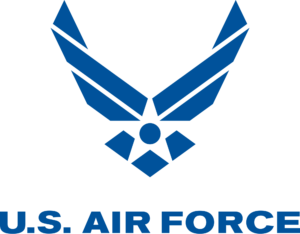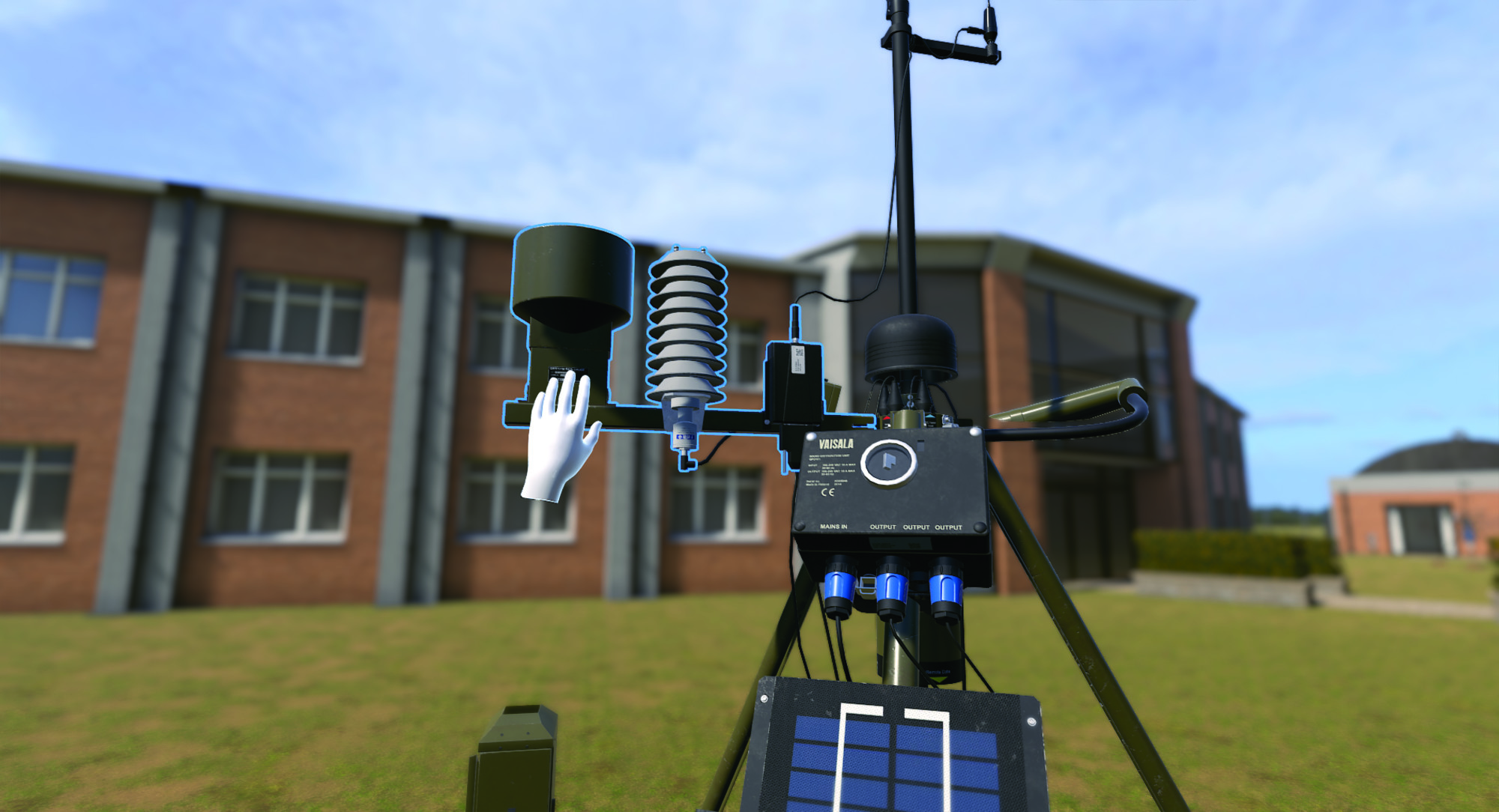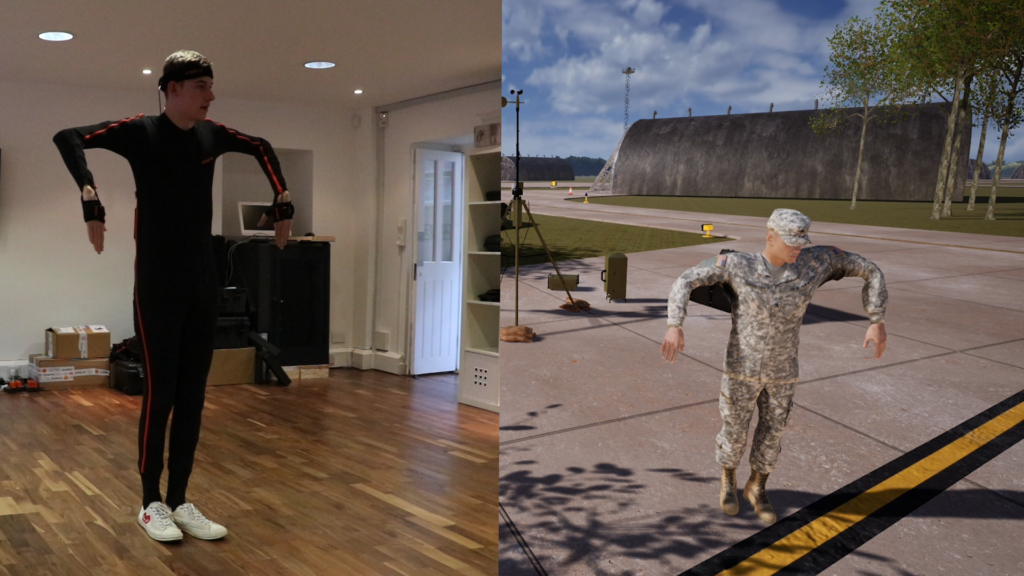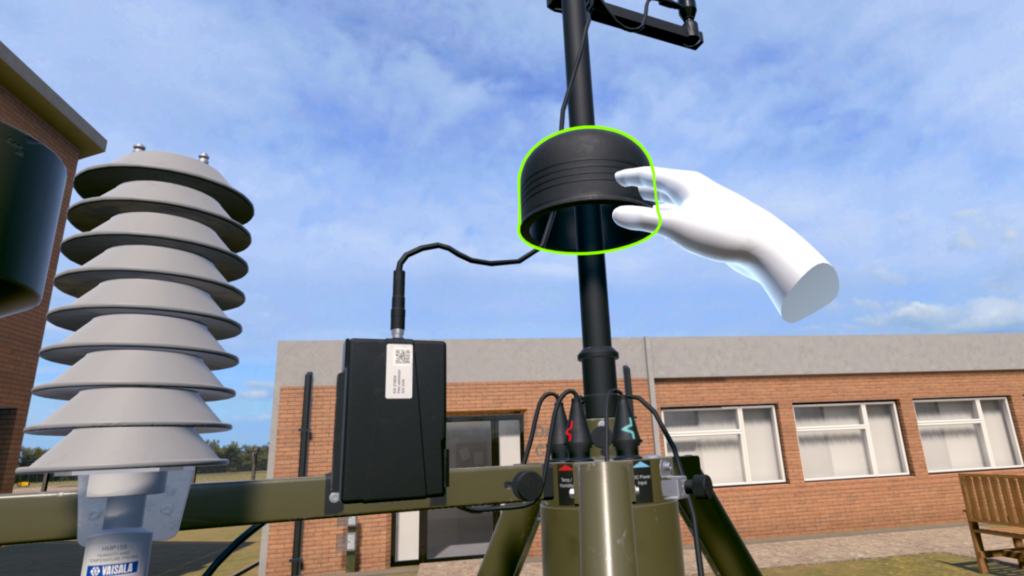Defence, Military Training
Virtual Reality
VR Military Training Breakthrough for the United States Air Force
VR Military Training application to reduce travel and equipment costs around TMQ53 assembly and improve overall employee retention.
CLIENT
United States Air Force
OBJECTIVE
Our client tasked us with the objective of developing solutions that could reduce travel and equipment costs within the U.S. Air Force, while also improving employee retention.
The goal was to dramatically reduce training and equipment costs for mobile weather station and broadband network station deployment.
APPROACH
SHIIFT developed a Virtual Reality (VR) technical weather training program for employees using an immersive and interactive simulated experience for working with parts and components on equipment.
Designed to replicate real-world weather station and broadband network operations, allowing trainees to engage with the systems and practice troubleshooting and operational tasks in a virtual environment.
This approach ensured that personnel could receive hands-on training without the need for physical equipment, which reduced both travel and logistical costs.
Our solution was developed through the use of a VR headset, making it accessible to trainees from various locations, allowing for scalable, repeatable training without the constraints of geographic location or equipment availability.
What were the problems faced in USAF’s Weather Training?
SHIIFT was retained by the United States Air Force in order to reduce the high costs of training and to reduce the resources required in order to deploy and work with live weather control stations and broadband network stations. This also included accounting for employee retention and the loss of efficiency, thus our solution needed to improve employee retention and increase efficiency dramatically.
The client also needed to drastically reduce expenditures on travel and equipment costs that are typically incurred for employees to work with live equipment and operational assets.
High Costs of Traditional Air Force Training
The United States Air Force faced significant financial challenges due to the high costs associated with training on the TMQ-53, a highly expensive piece of equipment. With a limited number of units available, there were not enough TMQ-53s for widespread training, which required instructors and trainees to travel to specific locations annually for refresher training.
This resulted in substantial travel expenses. Additionally, the large number of trainees needing annual training led to a massive recurring cost each year, further straining the budget.
EFFICIENCY AND EMPLOYEE RETENTION CHALLENGES IN MILITARY TRAINING
Beyond the high costs, the Air Force also faced challenges related to the efficiency of training and employee retention. The requirement for instructors and trainees to travel to specific locations for annual training limited the frequency and consistency of training opportunities. This occasional access to training sessions meant that personnel had fewer chances to practice critical skills and reinforce their knowledge on a regular basis.
As a result, while employees remained engaged, the limited training opportunities made it harder for them to fully develop their skills and for the Air Force to maintain the highest levels of efficiency and readiness.
LIMITED SCALABILITY IN WEATHER TRAINING PROGRAMS
The U.S. Air Force operates a limited number of TMQ-53 Tactical Meteorological Observing Systems, which are essential for real-time weather data collection in austere environments. Given the high cost of each unit, and the logistical challenges associated with transporting and setting up these systems, the Air Force faces difficulties in providing widespread, hands-on training.
Virtual training experiences offer a viable solution by eliminating the need for physical travel to specialized locations. By simulating the use of TMQ-53 systems in a virtual environment, personnel can gain critical operational experience without the limitations imposed by the availability and mobility of the actual equipment. This can significantly reduce costs while improving training accessibility and efficiency.
THE SOLUTION: A COST-EFFECTIVE, EFFICIENT, AND SCALABLE VR MILITARY TRAINING TOOL
We knew that saving on costs is one of the many benefits of VR and with reducing high costs being a key reason for the development of the training tool, we knew simulating the TMQ-53 in a virtual environment was the perfect answer to their scalability and efficiency issues.
Our team designed a Virtual Reality (VR) program which simulated a digital twin of all components used in a mobile weather station and broadband network station. This accurate, to-scale virtual simulation of the equipment enabled employees and trainees to practice the technical skills and processes involved with erecting and repairing both types of equipment.
The simulation contained over 80 components and provided employees with an extremely accurate and realistic ‘hands-on’ experience that was engaging and interactive for trainees and employees. Thus, trainees were able to quickly and efficiently hone their skills before working with live equipment, which improved efficiency and reduced mistakes.
COST-EFFECTIVE TRAINING
The weather training tool significantly reduced the recurring travel expenses and the costs associated with maintaining and transporting live equipment.
By virtualizing the training experience, the Air Force could ensure that more personnel had access to critical weather training without the financial burden of traditional methods.
ENHANCED EFFICIENCY AND OPERATIONAL READINESS
Incorporating virtual training allowed the Air Force to improve training efficiency by providing more frequent and consistent training.
Personnel could engage in self-paced training, reinforcing critical weather observation skills and real-time decision-making without having to wait for the next physical training event.
Scalable Training
With the virtual solution, the Air Force overcame the scalability issues related to limited TMQ-53 units.
More personnel could now be trained simultaneously, without being limited by the availability of equipment or specific locations.
SHIIFT created a fully synthetic environment that could be controlled for realistic parameters faced in the real world, including inclement weather or equipment malfunctions, which enhanced the quality of training.
All data and statistics can be analyzed by trainers to provide accurate feedback and to improve learning outcomes for trainees. The solution also includes assessment functionality designed to test trainees in specific areas.
Assessment functionality was also included to test the trainees in several areas including:
-
- Selecting the most appropriate location by choosing from 4 pre-determined locations
- Assembling the TMQ in the correct order, connecting all the cables correctly
- Using the laptop and BGAN in a separate area of the base to connect to the TMQ-53 via satellite
- Using a video on the laptop display to connect to the TMQ systems
Development Engine
Our immersive VR Military Training solution for USAF was completed using the Unity game development engine. This development engine was ideal for the development of virtual assets and e-learning functionality.
IMPACT
The U.S. Air Force saved over $2,500,000 in the first 6 months of deployment, while increasing employee retention.
Read more about the success of the outstanding weather training in the Air Force article.
When was this completed?
The VR program was completed for the United States Air Force in March 2019. The client is now able to use the program to train current employees and new trainees.
How long did it take?
The project took 3 months to complete, from our initial consultation with the client to the finished product delivery. Our team maintained open and consistent communications throughout the progression of the project.
PROJECTS YOU MIGHT BE INTERESTED IN
Get in touch.
Send us a message and we’ll get
back to you within 48 hours.
Alternatively, email
hello@shiifttraining.com
Deliver next generation training. Get in touch.
Email us at hello@shiifttraining.com or send
us a message and we’ll be in touch within 48hrs.



